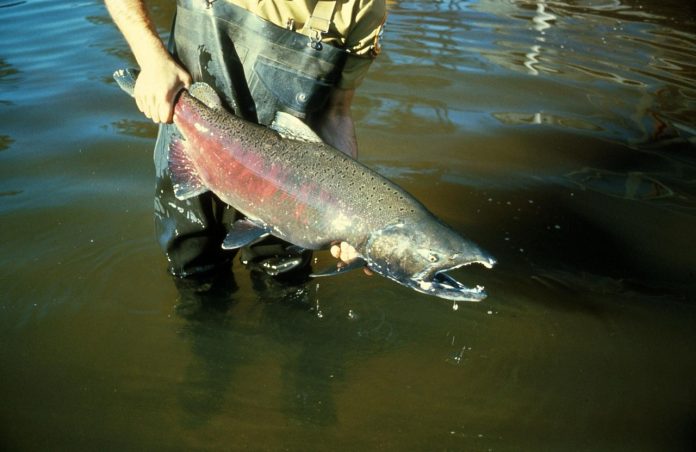A recent article describing what promises to be a banner upcoming season for Lake Ontario anglers brought a response from a knowledgeable New York, Niagara County, tourism official who wanted to set me straight on what I described as a put and take fishery.
I claimed the stocking of salmon and trout to be due to the fact that salmon, both Chinook and Coho, don’t reproduce naturally — thus the need to put hatchery-reared fish in each year. Shame on me.
According to my trusted New York resource, Lake Ontario salmon are quite successful at reproducing on their own.
In fact, he said that it’s well documented that about half of the new salmon entered into the lake are produced naturally, meaning adult salmon enter tributaries where they spawn, fertilize, and produce eggs which become fry which become little salmon.
That may not make a puddle of difference to the average fisher, but it does help to understand how a freshwater salmon program works. I find it fascinating. You might as well.
In the early 1960s, none of the Great Lakes held a salmon or at most a couple of misplaced fish.
A program to stock “non-native” Pacific salmon was proposed on the fact that Lake Michigan was stuffed with forage fish such as smelt and alewife but hardly any predators to prey on them other than native lake trout.
And as they say, the rest is history.
Pacific salmon
Pacific coast salmon live short lives, returning to the river where they were born as adults of 4 or 5 years depending on the species.
The cycle is simple and final, adult salmon swim upriver, spawn and die.
That’s the salt water story and it proved to hold true when the experiment to stock young salmon in Lake Michigan’s fresh water kicked off an exciting fishery though out the Great Lakes system. As far as stocking goes, without it a fishery of today’s highly popular level is unlikely.
Consider this — not all young salmon that reach the expansive waters of Lake Ontario return as adults to the tributaries. Not even close to all.
In fact, there are lots of reasons for this. Natural losses, summers-long off-shore sport fishing harvest, death by lamprey, losses of young fish to larger predators, etc.
In short, it takes a lot of young fish each year to produce a decent number of adults that have survived four or five years in the lake.
Another issue is that baby salmon that are dumped into the lake randomly can’t home in a stream when they return.
So how do fisheries officials and conservation groups work to get young salmon to return in relatively high numbers to the stream or river of their release? By holding several thousand youngsters in a pen which is under the water in a stream such as that at ports like Wilson, Olcott and Point Breeze.
Believe it or not, these youngsters are soon imprinted with the “smell” of that particular river and are most likely to return to it when they mature and instinctively seek it out.
Ohio
Why doesn’t Ohio stock salmon? Salmon stocking has been tried several times by Ohio fishery officials, always with dismal results.
A few stuck around and even less were caught by anglers but for the most part, salmon stocked in Buckeye waters sought the cooler and deeper waters further east, and they never looked back.
Tick solution
A tick solution offered by reader: Peppermint oil is the answer when it comes to dealing with an embedded tick according to Newark Farm and Dairy reader Lynn Ashcraft who claims a drop of peppermint oil on the rear end of a digging tick will have it backing out in short order. Sounds like a plan.













